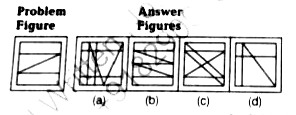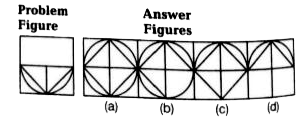Which of the following problems from the textbook of Class IV refers to 'multidisciplinary problem'?
Draw the flag of India and identify the number of lines of symmetry in the flag.
Draw the mirror image of a giyen figure.com
How many lines of symmetry are there in a given figure?
To draw a line of symmetry in a given geometrical figure,
The correct Answer is:A
Step by step video, text & image solution for Which of the following problems from the textbook of Class IV refers to 'multidisciplinary problem'? by Environmental Studies experts to help you in doubts & scoring excellent marks in Class 14 exams.
Updated on:21/07/2023Similar Questions
Knowledge Check
"Two complementary angles are in the ratio 2 : 3. Find these angles"
The above problem from NCERT textbook of Class VII refers toAHigher order thinking as it demands construction of a figure using given informationBLower order thinking as it is based on recalling informationCLower order thinking as it is based on using the information in concrete situationDHigher order thinking as it demands the interpretation of given information, its analysis and use in getting the desired information"Two complementary angles are in the ratio 2:3. Find these angles." The above problem from NCERT textbook of Class VII refers to
Alower order thinking as it is based on using the information in concrete situationBhigher order thinking as it demands the interpretation of given information, its analysis and use in getting the desired informationChigher order thinking as it demands construction of a figure using given informationDlower order thinking as it is based on recalling information"Two complementary angles are in the ratio 2 : 3. Find these angles." The above problem from NCERT textbook of Class VII refers to
Alower order thinking as it is based on using the information in concrete situationBhigher order thinking as it demands the interpretation of given information, its analysis and use in getting the desired informationChigher order thinking as it demands construction of a figure using given informationDlower order thinking as it is based on recalling information
In the following problems from the given answer figure , select the one in which the problems figure is hidden embedded.
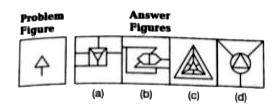
View SolutionIn the following problems from the given answer figure , select the one in which the problems figure is hidden embedded.
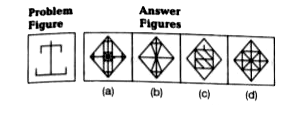
View SolutionIn the following problems from the given answer figure , select the one in which the problems figure is hidden embedded.
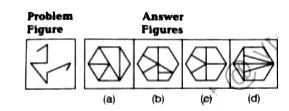
View Solutionwhich of the following problems has a loop in thee flowchart drawn to solve the problem ?
View SolutionWhich of the following skills refers to an ability to derive the best possible solution to a problem?
View Solution

